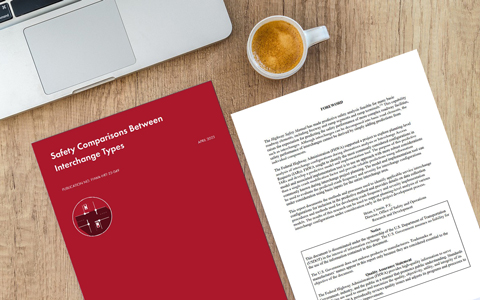
The Federal Highway Administration (FHWA) partnered with VHB to evaluate the Safety Comparisons Between Interchange Types and Interchange Configuration Safety Comparison Tool this Spring to better predict the safety performance of proposed interchange configurations during preliminary planning. With a focus on helping State departments of transportation (DOTs), the interchange safety comparison process and spreadsheet implementation tool will allow them to estimate crash frequency and severity of proposed designs against a base condition. In addition, these resources will be helpful for agencies preparing Interchange Justification Reports (IJRs)—required documentation that explains the need for an interchange or interchange modification.
Traditionally, IJRs are written early in the project planning and design process when detailed geometric elements may not be known, making it challenging to use the Highway Safety Manual (HSM) predictive method for freeways, ramps, and ramp terminals to accurately predict how many crashes may occur and how severe they might be. The predictive model and its corresponding implementation tool allow for more dependable predictions by utilizing information that is known during the planning phase.
“These technology-enabled resources will be invaluable for practitioners to estimate the safety performance of proposed interchanges at the planning and conceptual design level,” said Scott Himes, Highway Safety Engineer. “Often, too few details are known to fully use the HSM predictive method and agencies can’t compare alternative configurations of the expected safety performance relative to each other. This will support documentation and analysis, particularly for interchange modification requests.”
The spreadsheet tool directly implements the methods, geometric and operational characteristics, and parameters that the FHWA and VHB determined to be required to make more accurate decisions regarding interchange safety and planning. This includes details such as how much traffic is on the roadway; number of lanes on the freeway and crossroad; any special features, like managed lanes or left-turn lanes; and interchange design. These details will allow DOTs to measure how safe new designs are in comparison to a typical or alternative condition.
VHB is dedicated to supporting our clients and partners in their efforts to reduce crashes, fatalities, and serious injuries that result on our nation’s transportation system. We take a Safe System Approach to safety management—considering all modes of transportation and all users. Learn more about Safety at VHB, or contact Scott Himes via email or LinkedIn to learn more about this project.
